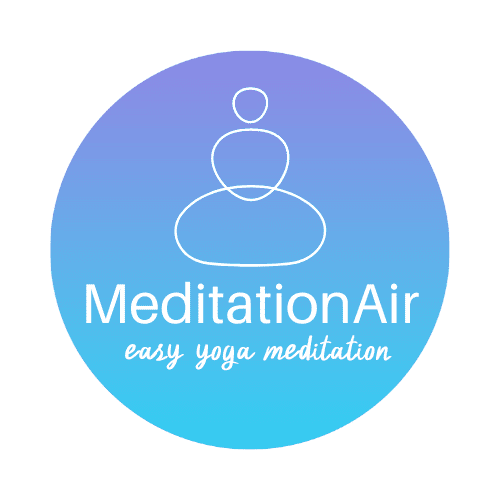What’s the difference between yoga and meditation?
Yoga is a physical practice that combines breath control, postures, and movement to improve flexibility, strength, and balance. Yoga meditation is a mental practice that involves focusing your attention on a specific object or activity to calm your thoughts and develop greater self-awareness.
They work well together because they have the same goal.
Have you ever wondered about the real difference between yoga and meditation? They so often get lumped together. And while traditionally the two practices are intertwined (and part of the same greater system of yoga), they are actually distinct in their approaches. Their goals, however, are the same.
I’ll get into the nitty gritty here so you come away with a better understanding of the differences between these two practices.
What is Yoga?
Yoga is a physical practice that involves performing a series of poses and movements (asanas) designed to strengthen, stretch, and balance the body. Originating from ancient India – evidence goes back over 5,000 years! – asanas range from easy poses, like a seated cross-legged pose (Sukhasana), to more challenging moves like headstands, backbends, and arm balances.
Practicing asanas is often coordinated with breathwork, making each movement flow seamlessly into the next, creating meditative and rhythmic movements. This union of breath and poses not only enhances flexibility and endurance but also fosters mindfulness and concentration. This is one thing that sets yoga apart from most other forms of physical fitness.
Yoga practice can be adapted for different levels of ability, and can be as gentle or as intense as you want it to be.
While some people may think of yoga as simply stretching or exercise, it has a much deeper purpose in Indian philosophy and spirituality: prepping the body for meditation.
A Few Words about the Yoga High
Yoga is more than just a physical exercise; it’s a way to de-stress the mind and body in a way that few other forms of exercise can do. People often feel so chill after yoga – so often that there’s a term for this state of bliss: the ‘yoga high.’
That’s because yoga combines physically demanding movements with breath control exercises and meditative poses in a calm, safe environment. Doing all that together triggers your parasympathetic nervous system, which leaves you in a better mood, and feeling less anxious and stressed. It’s been researched!
What is Yoga Meditation?
Yoga meditation is a mental practice that involves focusing your attention on a single point. That can be one thought, a sound, a mantra, or symbol from nature. It is an intense form of concentration that serves to quiet the mind and allow you to detach from external distractions.
The result is profound inner peace and mental clarity.
We focus on the task of quieting the mind, which has countless benefits. Meditation has been scientifically proven to boost physical health, mental health, and overall quality of life.
Yoga mediation is as old as yoga, maybe even older, and originated in the same ancient Indian culture thousands of years ago. It appears that the two practices have been intertwined since their early days.

Key Differences between Yoga and Meditation
Now, let’s dive into what sets these two practices apart.
First, the obvious: Yoga is about movement. Yoga meditation is about stillness.
Yoga can be considered an active form of relaxation while meditation is a passive form of relaxation. There are meditative elements to yoga, as mentioned above, but they aim to help you perform better in the poses.
Yoga builds mindfulness about the body. Yoga meditation builds mental concentration and focus.
Another difference between yoga and mediation is how they work on the mind.
Yoga cultivates this mindfulness through intentional, focused movement, and breathwork. As you move through asanas, you’re encouraged to observe bodily sensations, alignment, and balance. Over time, this helps you grow awareness of your physical boundaries, strengths, and areas in your body that need attention.
Yoga meditation, on the other hand, involves keeping sustained attention on specific focal points while moving the body as little as possible (ideally not at all). Regular practice trains your mind to shut off distractions and cultivate a state of single-pointed concentration. You train the discipline of continually returning to the chosen focus after your mind wanders – and it will.
The benefits of yoga and meditation are different…and also the same
Practicing yoga consistently yields numerous physical health benefits, including improved posture, better breathing capacity, greater joint mobility, and a reduction in physical ailments like back pain.
It also serves as a grounding tool, helping you cultivate a deeper connection between your mind and body, as I discussed in the section above.
Meditation also has physical benefits due to the powerful way it reduces stress. It can help you manage stress-triggered problems like poor sleep, anxiety, and high blood pressure.
Meditation’s mental benefits are even greater. Do regular meditation practice for a while and you’ll notice your ability to concentrate rises. You’ll likely experience better focus and clarity in daily tasks as a result of this mental training.
Yoga and meditation intersect when it comes to emotional benefits. Remember the ‘yoga high’? This is the profound, positive effect that doing yoga has on your mood and self-confidence. Similarly, practicing meditation over time will also enable you to better distance yourself from strong, negative emotions – aka ‘emotional regulation’ – which helps you build stronger relationships, manage stress, and just feel better emotionally.
The Shared Goal
Yoga and yoga meditation are parts of a holistic system that has one ultimate spiritual goal: to reach samadhi, a state where your sense of self disappears and you feel at one with the universe.
Yoga’s aim is to prepare the body to settle down and be able to sit in meditation for extended periods of time. And yoga meditation’s aim is to, someday, reach samadhi. That’s hard to do.
I prefer not to focus much on samadhi because it is such a stretch. Just mastering stillness, concentration, and detachment from distractions is quite enough – and has so many benefits as it is.
Whether you prefer to flow through a sequence of postures or find stillness in seated meditation, both yoga and yoga meditation can help you cultivate mindfulness, reduce stress, and improve your overall well-being. They belong together, so why not try both?


